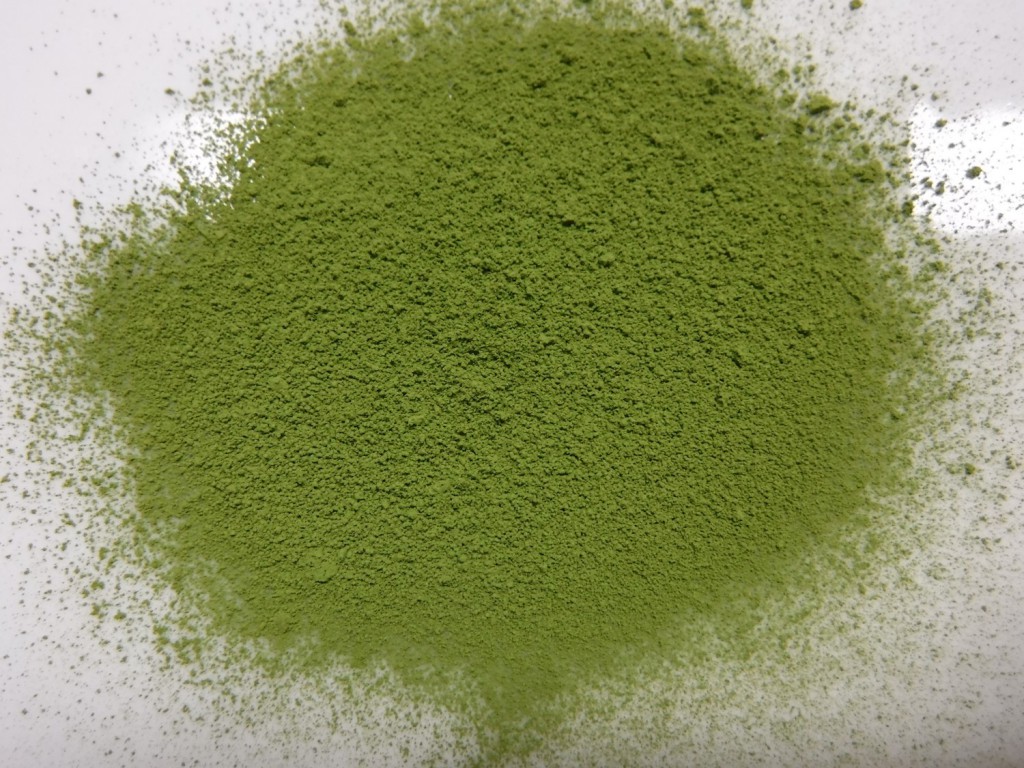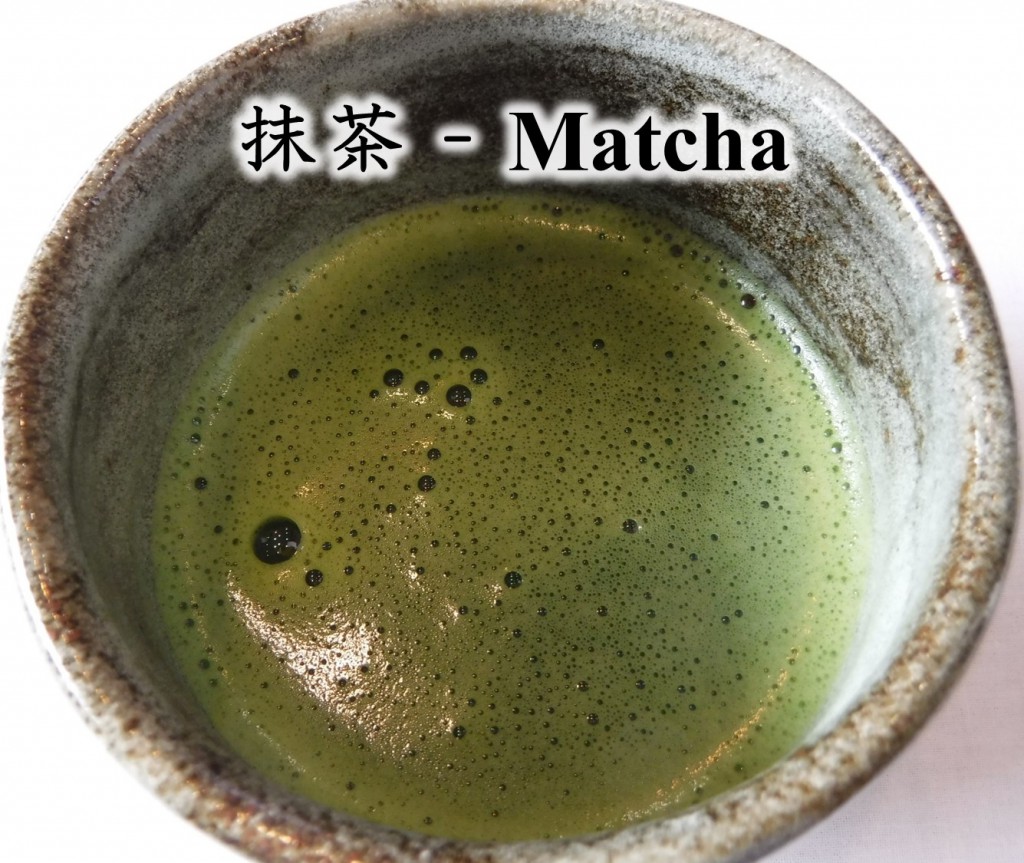
As posted before, matcha is useful for addition of bright green color and richness to meals. Besides, matcha has been gaining its popularity worldwide due to its health benefits derived from various constituents such as catechins, theanine, vitamins etc. According to Tea Association of the U.S.A., the versatility of matcha and its sensational image in social media also seem to be reasons of the growing concern of matcha.
When using matcha as additives for cooking, have you ever seen matcha formed aggregates or likely to be difficult to mix with water or other liquid? Or in a tea ceremony experience, have you ever been aware of the difference in foam formation of matcha among participants? The properties of matcha related to handling in food preparation would be more concerned in food industries as the popularity of matcha increases.
I’d like to share my speculation about the properties of matcha as a series of blog posts entitled as ”matcha phenomena”, wishing acceleration of research activities for tea science.
Now I’m very curious with some properties of matcha as follows.
(1) Foaming properties
Foaming properties such as stability of foam, size of bubble, its effects on fluidity of matcha should be studied as functions of particle size distribution, surface roughness of particles, ionic condition and constituents of liquid phase, particle concentration etc. In my opinion, key factors are interaction between matcha particles and gas/liquid interface and chemical environment of aqueous phase.

Various factors have effects on foam formation of matcha, resulting in the difference of size distribution and stability of bubbles.
(2) Rheological properties
Fluidity of matcha and its suspension, viscosity of matcha suspension, response of matcha suspension for outer forces containing electrical force should be discussed as functions of various factors mentioned above.
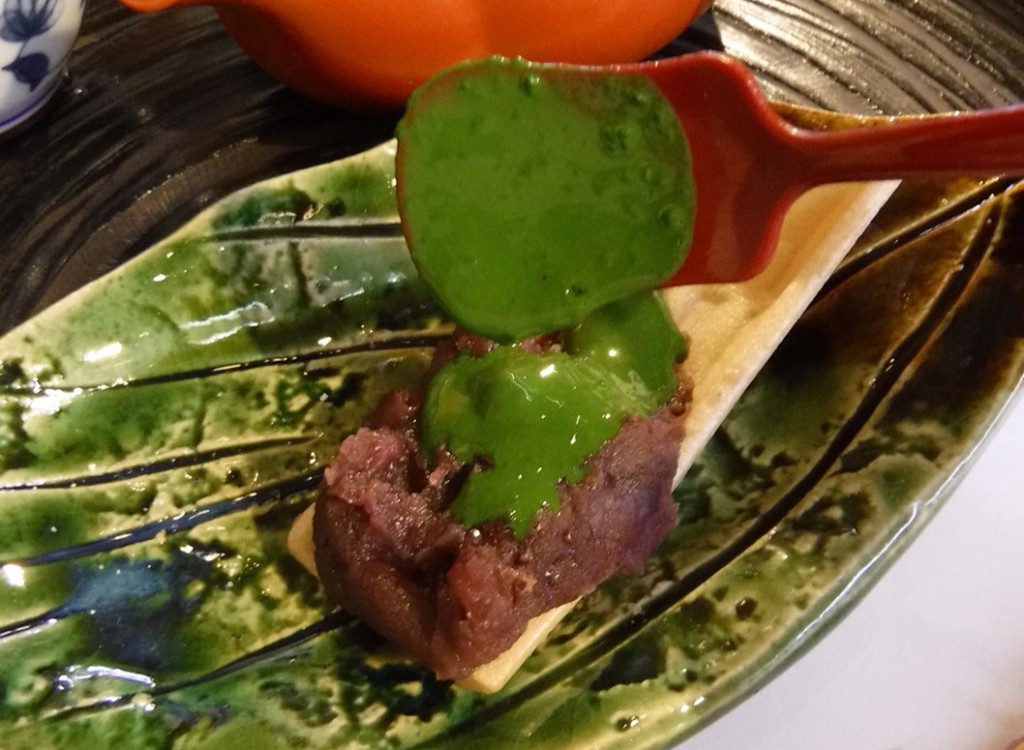
(3) Wetting properties
Wetting properties can be exchange the interaction of matcha with water or other liquids. There could be some approaches for example measurement of contact angle of liquid droplet on uniform powder sheet of matcha, analysis of surface hydrophobicity or hydrophilicity of matcha particle, simulation of interaction between matcha surface and liquid molecules, etc.
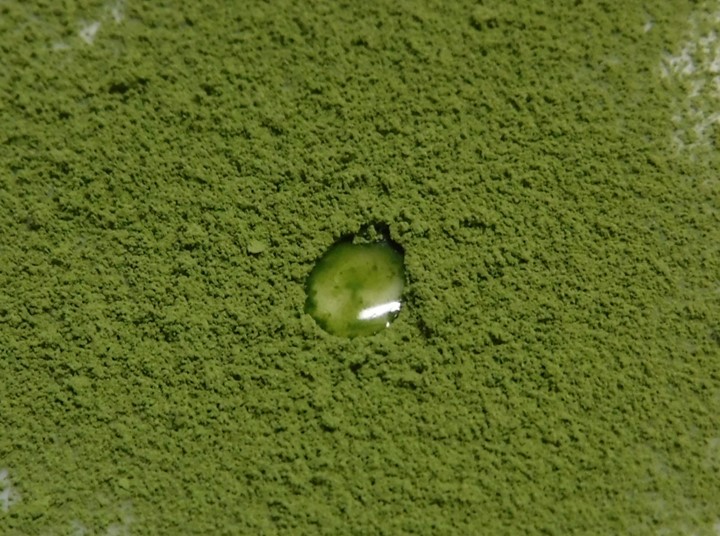
(4) Dynamics and kinetics of match suspension
As posted before, tea infusion could be considered as polymeric dispersions. Matcha suspension could be also supposed to be an unique dispersion, which consists of heterogeneous particles and bubbles dispersed in a solution changing its composition due to the extraction of constituents from matcha particles. Foams, liquid phase, matcha particles and their aggregates would behave in the interaction among them and change with elapse time because of outer forces and changes in chemical composition of liquid phase and matcha particles.
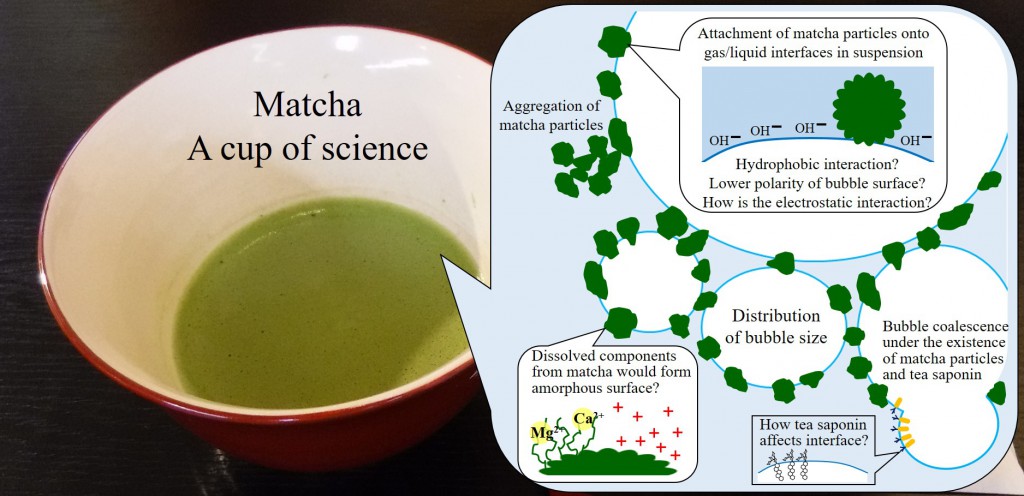
I’d like to say matcha is a cup of science, as well as a cup of humanity as mentioned in “The Book of Tea” written by Tenshin Okakura.
(5) Powder technology for matcha handling
Insights based on powder technology would be useful for handling matcha in tea and food industries. Different from suspension state, interactions among matcha particles in gas phase would be affected by the other factors. I think electrostatic force can be dominant due to the non-existence of higher dielectric media, water.
